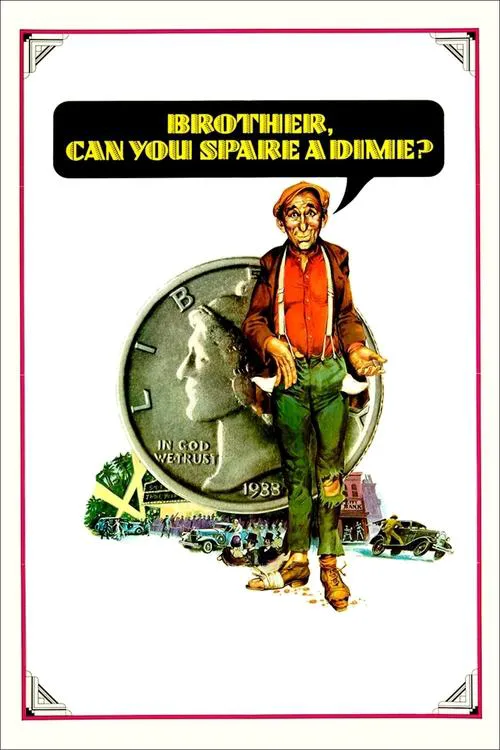Brother, Can You Spare a Dime?

Plot
Brother, Can You Spare a Dime? is a 1975 American documentary film that delves into the tumultuous world of the American entertainment industry during the Great Depression. Directed by Philippe Mora, the film is a poignant visual exploration that showcases a bygone era of Hollywood's golden age, juxtaposed with the harsh realities of economic hardship faced by many during that time. The film takes its title from the classic song of the same name, made famous by Bing Crosby and later covered by many other artists, including Gene Kelly, who would go on to star in the iconic musical film Singin' in the Rain. This iconic tune becomes a recurring theme throughout the documentary, symbolizing the desperation and resilience of the American people during a period of unimaginable struggle. Through a unique blend of period music, film clips, and newsreel footage, Brother, Can You Spare a Dime? offers a captivating look at the glamorous world of Hollywood, where stars like Clara Bow, Greta Garbo, and Jean Harlow reigned supreme. We see clips of classic movies like It Happened One Night (1934) and Gold Diggers of 1933 (1933), showcasing not only the artistic brilliance of the era's filmmaking but also the elaborate sets, costumes, and makeup that defined the Hollywood aesthetic. However, this visual feast is interspersed with newsreel footage of bread lines, shantytowns, and other signs of economic devastation that marked the Great Depression. The juxtaposition of these two worlds creates a jarring contrast between the luxury of Hollywood's elite and the hardships faced by ordinary Americans. We see scenes of bread lines stretching around city blocks, families rummaging through garbage, and migrant workers toiling in the fields, all against the backdrop of the glamour and excess of Hollywood. The film also explores the ways in which the entertainment industry responded to the crisis. We see scenes of performers like Al Jolson and Eddie Cantor entertaining troops and singing songs about the hardships faced by everyday Americans. We also see behind-the-scenes footage of movie sets and studios, where stars and directors like John Ford and Orson Welles struggled to create art in the midst of economic uncertainty. One of the most striking aspects of Brother, Can You Spare a Dime? is its use of newsreel footage to tell the story of the Great Depression. Newsreels, which were a staple of movie theaters during the 1920s and 1930s, offered a unique perspective on current events, often featuring footage of news events, sports highlights, and even educational shorts. The film's use of these newsreels creates a sense of immediacy, transporting the viewer back to a bygone era and providing a poignant reminder of the struggles faced by ordinary Americans. Throughout the film, we also see scenes of the Federal Theatre Project (FTP), a Depression-era program that provided jobs for writers, directors, and performers who were otherwise unemployed. The FTP produced over 1,000 performances across the country, including dramas, musicals, and even experimental theater pieces. We see clips of FTP productions, showcasing the innovative and often provocative work of the artists involved. In conclusion, Brother, Can You Spare a Dime? is a powerful and poignant documentary that offers a unique perspective on the American entertainment industry during the Great Depression. Through its blend of period music, film clips, and newsreel footage, the film creates a captivating look at the glamour and excess of Hollywood, juxtaposed with the harsh realities of economic hardship faced by ordinary Americans.
Reviews
Recommendations



